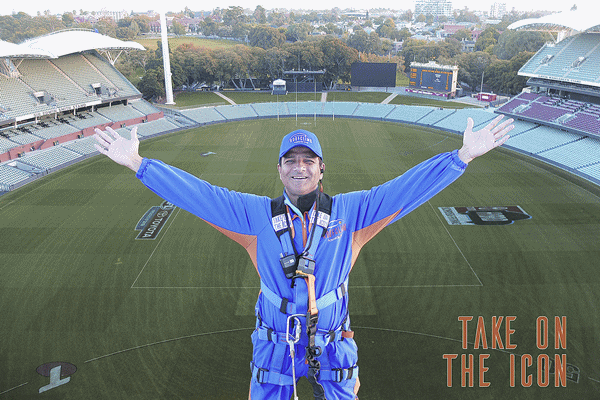On a winning pitch
Tourism Australia’s (TA) India ‘Master Blaster’ Nishant Kashikar, country manager, Tourism Australia, India and Gulf, says that he believes in pushing a person into the pool, and letting him learn how to swim, rather than hand-holding him to complete his task.
It’s been eight years of work with Tourism Australia. How has the journey been?
It’s been a privilege to be a part of the Tourism Australia (TA) team to raise the country’s aspiration and awareness in India, and strengthen people to people links between the two countries. Working together with our partners, embracing TA’s core values such as United, Genuine, Positive, Commercial and Innovative, has helped us to achieve several milestones over the eight-year journey.
Some of the triumphs include: Successful launch of our first bespoke campaign in India, Namaste Australia, showcasing Australia through the eyes of Indians who have either visited or lived in Australia.
Launch of our global campaign There’s Nothing Like Australia and Restaurant Australia, supported by our intensive content integration projects on Sony, Star Plus, and collaboration with regional channels such as Zee Marathi, Sun TV and Colors Kannada, have helped us to bring Australia in the consideration set of our target audience.
Association with our Friends of Australia – Sanjeev Kapoor, Harsha Bhogle and Parineeti Chopra – have raised Australia’s appeal among their fans and followers.
Launch of an industry-first initiative – Airline Marketplace, which began as a trial, has witnessed some amazing results, and is currently in its fourth edition, and will also be replicated across other South East Asian markets such as Singapore, Indonesia and Malaysia.
Prefered Agency Scheme (PAS) and Aussie Specialist Program (ASP) were industry benchmarks to facilitate access and impart trainings to front line staff of travel agencies The relationship between Australia and India has matured over the years, and is at an all-time high, thanks to the strong people to people links developed through tourism, trade, and education.
The key issue and a barrier to drive growth has been lack of direct aviation access between India and Australia, and we are collaborating with the Australian airports and both, state and federal government offices to promote and facilitate Indian carriers to fly to Australia.
How would you like to describe your management style?
Every member of a cricket team has a role to play. Someone is a specialist opening batsman, then there’s someone whose job is to hold the innings together, someone else is assigned the task to slog and up the ante, and then you have bowlers who bowl swing, fast, medium pace, or right and left arm spin.
Likewise, I personally believe that each person in an organisation possesses certain strengths and there’s a reason for recruiting a person for a particular role. It’s upto the leader or the captain, to trust the abilities of that individual, provide clarity of role and objectives, harness their skill-sets by providing constructive feedback, and then allowing the person to complete the task to the best of his or her abilities. I believe in pushing a person into the pool, and letting him learn how to swim, rather than hand-holding him to complete his task.
How has the industry in India evolved?
Whilst travelling overseas was once restricted to the affluent and super rich, it’s now becoming a part of every person’s lifestyle. Travel has evolved from being a luxury to a necessity. The consumer on the other hand has also evolved from a tourist to an experiential traveller, from one who would travel to tick the boxes and pose in front of the icons, to someone who immerses himself into the local culture, tradition, and cuisine.
Marketing has also seen a significant shift from the traditional, above the line advertising, to a new- age digital ecosystem, leveraging the power of social media, and penetration of hand held devices. We are now moving towards behavioural and psychographic targeting, and in this day and age we are now able to identify potential travellers through predictive analytics and algorithms.
Due to low entry barriers, fragmentation has also seen a rise with a drastic increase in the number of mom and pop stores and independent business units mushrooming in each city, which has led to the co-existence of the traditional and online travel agencies (at least in the short-term), in a market that has very high service delivery expectations. With 1.6 billion domestic trips and over 23 million outbound visits, travel continues and will remain a sunrise industry. However, it hasn’t attracted the best of talent and is not one of the sought- after career options, as it has largely remained unorganised. The onus of building travel and hospitality as a lucrative career option rests in the hands of the industry leaders.
Is there an interesting experience you wish to share that was defining in terms of an achievement at TA?
It all began in December 2010, when a high-powered, eight-member CEO delegation comprising of the heads of Australian state and territory tourism organisations, and led by Tourism Australia’s ex-chairman, Geoff Dixon, visited India on a fact-finding mission, to speak to the industry experts, and understand India’s potential. What transpired after their visit, after thorough research and industry consultation, was the launch of the India 2020 Strategic Plan in June 2012, to capitalise on the opportunity offered by the Indian outbound market. Since then, meticulous planning and superior execution of strategies have led to the achievement of the India 2020 goals, three years ahead of its target date.
What hobbies do you pursue?
I am a passionate cricketer who loves to play a T20 game every weekend. I stay fit through regular walks and jogs. And I try to remain calm by practising yoga and meditation, that also helps me to maintain a positive outlook at all times.

